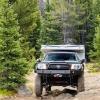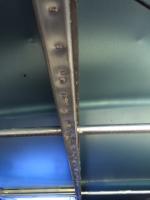Craig, thanks for the search and finding the answer to the foam question. It make for an interesting idea to fill the tubes with foam.
Not sure of the true benefits but it couldn't hurt being that the roof is insulated everywhere except for the tubes.
Cheers!
My guess is that foam in the tubes won't have much of an effect. Those sneaky little temperature critters are just going to follow the aluminum, or at least that's my uninformed opinion.


















